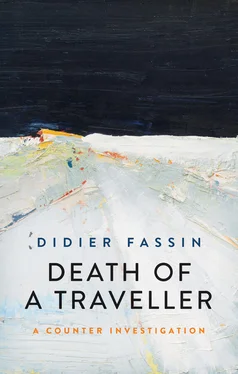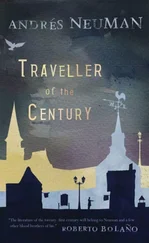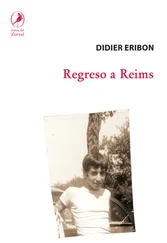Finally, the almost daily conversations I had with Anne-Claire Defossez throughout the period of writing, and her comments on the book, helped me to resolve a number of problems that I faced, to reorient myself when I went off track, to clear the doubts that obscured the way forward, and – without reaching them – to test the limits of her patience.
A Simple Story Preface to the English Edition
It is a simple story. Somewhere in France, a man from the Traveller community is sought after he fails to return from home leave to the prison where he has been serving time for a number of robberies that did not involve violence. As he is visiting with his parents at the family farm, an elite unit of the gendarmerie, the GIGN, heavily equipped and armed, launches a major operation. Hiding in the dark in a lean-to, he is discovered and killed. The men who shot him assert that he attacked them with a knife and they were obliged to fire in legitimate self-defense, but not before they had announced their presence and attempted to bring him under control without the use of weapons. Five members of his family who are present outside the lean-to, held handcuffed on the ground at machinegun point a few yards from the site of the events, maintain that the shots came only a few seconds after the gendarmes entered the lumber room, without either warning or the sounds of a struggle. An inquiry is immediately opened by the national gendarmerie’s investigation department; its conclusions support the account given by their colleagues. The public prosecutor makes a statement that reiterates this version but, because a man has died, requests a judicial investigation. Taking into consideration some troubling elements in witness statements and expert witness reports, the examining magistrate decides to place the two officers who fired the shots under investigation. However, eighteen months later, just before giving her ruling, she is transferred to another jurisdiction. The colleague who takes over from her is in her first posting as examining magistrate and has to draw up the final ruling immediately after her appointment. She follows the public prosecutor’s analysis and dismisses the case. The family lodges an appeal. It ends with the same ruling. The two GIGN men who fired the fatal shots will therefore never be brought to trial. Deeply traumatized by her brother’s death, suspecting from the outset that the gendarmes are lying, and shocked by the speed with which the public prosecutor moved to validate their version of the events, Angelo’s sister commits publicly to ensuring that, as she puts it, the truth is told and justice done. She takes the lead in a local campaign that echoes those led by other young women whose brothers have also died in interactions with law enforcement without the officers involved in these deaths ever being convicted. When the final appeal is rejected by the Court of Cassation she submits a petition to the European Court of Human Rights, in the hope that it will issue a judgment against the French state both for the circumstances of her brother’s death and for the way the justice system proceeded in exonerating the gendarmes who killed him.
A simple story, then. A minor incident that did not even merit a mention in the national media. Only the local newspaper reported it, in brief articles that reiterated the public prosecutor’s version without any attempt to inquire into the family’s testimony. Yet what merits attention is precisely the fact that it is such a routine occurrence. Its apparent insignificance is what makes it significant. It combines all the elements present in any number of similar incidents that take place every day throughout the world: young men belonging to ethnic minorities who die as a result of encounters with the police; inquiries conducted by colleagues of the presumed perpetrators who confirm their account of the events; prosecutors and judges who decide not to pursue the case and accept their claim of legitimate self-defense. No homicide, therefore no case to answer. Lives stolen without justice being done. But, beyond this common set of circumstances, what makes this incident exemplary is, on the one hand, the normalization of deployment of special units and their disproportionate use of force as standard procedure in poor neighborhoods with a high ethnic minority population and, on the other, the increasingly generalized use of incarceration in response to offenses committed by lower-income sectors of society, contrasting with the leniency the law and judges exhibit toward crime and criminality among the privileged classes.
Such tragedies have long remained invisible to the majority of the population. The official versions justified punitive practices by stigmatizing the victims and exonerating the police officers responsible in the name of public order. But in recent years political campaigns have brought them into the foreground. In the United States, there is the Black Lives Matter movement, which burgeoned after Michael Brown was killed by a police officer in Ferguson, Missouri, in 2014. In France, the Justice and Truth committees have become vocal, the best known of which concerns Adama Traoré, who died in the police station at Beaumont-sur-Oise shortly after his arrest in 2016. Above all, the images of the dying moments of George Floyd, suffocated by a police officer in Minneapolis on 25 May 2020, have given this tragic event a worldwide impact, resonating with the police violence toward minorities experienced in many countries. What was until recently a blind spot in the public space is now common knowledge. What societies had implicitly tolerated seems to have become intolerable. Angelo’s death finds its place in this new moral economy, where what is at issue is not only the extinction of a life but also the indignity of the circumstances of this death, particularly the treatment of the deceased’s body, and the institutional lies that usually allow those responsible to go unpunished, further sullying the victim’s memory. Like a modern Antigone, the sister fights to restore respectability to her dead brother and, through him, to the Travellers, who are continually stigmatized and discriminated against, and she thus stands against all the Creons who lay claim to public authority.
But how can an account of this tragedy be rendered without eliding the issues involved? Is there a way to escape having to choose between outraged condemnation of an injustice and a bare description of the facts? This is a classic dilemma for social scientists, who often profess the value neutrality advocated by Max Weber, yet are aware that they are bound up in what Norbert Elias described as an involved epistemology. Over recent decades the answer has continually oscillated: in the French context, the tension is between the critical sociology of Pierre Bourdieu, declared to expose hidden power relations, and the pragmatic sociology of Luc Boltanski, supposed to establish a pure grammar of action and justifications for it, which dominated their field alternately in the late twentieth century. Rather than asserting that a solution to this dilemma has been found, it can be fruitful to take the view that this is an aporia which needs to be treated as such.
On this basis, I therefore proposed to approach Angelo’s death from two distinct directions. In the first stage, I strove to reproduce each of the testimonies gathered by the investigators and by myself, not only from those present at the scene but also from people who became involved later, so as to give an account from each individual’s point of view, whether that of the sister, the medical doctor, the public prosecutor, the local journalist or the examining magistrates. In the second stage, I attempted to carry out anew the investigation, drawing on all the available material, from records of depositions to expert witness reports, so as to produce a reconstruction of the events that, being based purely on empirical data, is as free as possible of bias and pressure. The writing strategy I have devised is therefore experimental. It seeks first to avoid the false objectivity of any unequivocal statement of the facts, as I give space to discordant voices and incompatible versions. It then makes it possible to do away with a comfortable relativism that would be limited to parsing each individual’s argument, since at the end of my analysis I propose an account of the events as they might plausibly have unfolded. My aim therefore is to open up the black box of the functioning of the state, more specifically its law-enforcement mechanisms, the police and the justice system, rather than adopting the position habitually taken by the social sciences on the outside. To put it another way, my aim is to investigate the investigation, and to do so by revealing what the judges caused to disappear. This is a delicate process and a risky endeavor, though. The judicial investigation is indeed legally protected by judicial confidentiality that may be lifted only by the public prosecutor. By dismissing the case, and consequently preventing a trial from being held, the examining magistrate removed the case from public view. By reopening the file, I make the various elements in it accessible to readers.
Читать дальше












